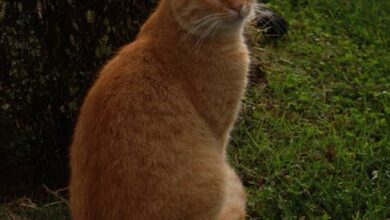The Q-Former: An Architect of Visual Understanding

In the rapidly evolving landscape of artificial intelligence, we often hear about large language models (LLMs) generating incredible text, or image generators conjuring breathtaking visuals from simple prompts. But what about bridging the gap between seeing and understanding, between pixels and profound textual descriptions? This is where the fascinating world of Visual Prompt Generation (VPG) comes into play, and at its heart lies a sophisticated mechanism known as cross-attention within models like the Q-Former.
Imagine showing an AI a photograph of a bustling street market and asking it to describe not just the objects, but the atmosphere, the intricate interactions, and the story unfolding. For an AI to truly grasp the visual nuances and translate them into a coherent, meaningful prompt for an LLM, it needs a specialized interpreter. That interpreter, in many cutting-edge multimodal architectures, is often a component like the Q-Former, leveraging the power of cross-attention.
It’s not just about identifying “a fruit stall” or “people walking.” It’s about distilling the essence of the visual input into a rich, contextual query that an LLM can then expand upon, generating anything from a detailed caption to a creative story or even answering complex questions about the scene. This isn’t magic; it’s the meticulous engineering of how AI models perceive and process information.
The Q-Former: An Architect of Visual Understanding
At its core, the Q-Former acts as a crucial intermediary, a bridge between raw visual data and the sophisticated linguistic processing capabilities of large language models. Think of it as an incredibly intelligent curator, sifting through the deluge of visual information to find the most salient details. Its architecture is often inspired by transformer models like BERT, but with a critical twist: it’s designed to speak the language of images.
Unlike traditional BERT models that primarily consume textual inputs, the Q-Former begins its journey with a set of “learnable query embeddings.” If you’re wondering what those are, imagine them as a fixed number of customizable questions or filters, perhaps 32 of them, ready to probe any incoming visual data. These aren’t just random placeholders; they are actively refined and trained to become experts at extracting relevant visual features.
During its initial pretraining stage, particularly in frameworks like BLIP2, these query embeddings are put to work. They “look at” images and learn to distill their vast pixel information into a compact, yet rich, representation. The goal is to capture the essence of what’s visually important, setting the stage for these embeddings to become highly effective visual prompts for subsequent LLM tasks.
From Pixels to Potent Queries
So, the Q-Former takes in visual data, often in the form of embeddings from a visual encoder, and uses its learnable queries to interact with it. But how does this interaction happen? This is precisely where the innovation of cross-attention shines. The Q-Former doesn’t just passively observe; it actively engages, transforming those initial general queries into highly specific and informative visual prompt embeddings.
The output of the Q-Former, specifically the final refined query embeddings, isn’t just a jumble of numbers. It’s a distilled, highly expressive summary of the visual content, crafted in a format that an LLM can readily understand and leverage. This compact representation is far more efficient and effective than feeding an entire image’s raw pixel data directly to a language model.
Cross-Attention: The Conversational Core
Now, let’s zoom in on the star of the show: cross-attention. Within the Q-Former’s layered structure (which typically comprises 12 layers, much like BERT), you’ll find modules for self-attention and feed-forward networks, similar to standard transformer blocks. However, the game-changer here is the cross-attention module, strategically inserted every few layers.
This cross-attention module is where the real dialogue happens. It’s the meeting point where the learnable query embeddings, our “questions,” directly interact with the incoming “visual embeddings” derived from the image data. Imagine a panel discussion: the query embeddings are the active interviewers, posing questions, and the visual embeddings are the respondents, offering information. Cross-attention is the mechanism that facilitates this information exchange.
Specifically, the query embeddings attend to the visual embeddings. This means that each part of a query can weigh and focus on different parts of the visual information, deciding what’s most relevant to extract. Conversely, the visual embeddings also influence how the queries are shaped. This bidirectional flow of information allows the Q-Former to progressively refine its initial generic queries into highly contextualized and descriptive visual prompts.
How the Interaction Shapes Understanding
Think of it this way: self-attention within the Q-Former allows its query embeddings to talk among themselves, refining their internal representations. But cross-attention opens the window to the outside world, allowing these queries to “see” and “understand” the visual input. It’s initialized with random values, meaning it learns from scratch how best to facilitate this interaction, adapting its parameters over extensive training.
As the query embeddings pass through successive layers of the Q-Former, each cross-attention module allows them to glean more nuanced information from the visual input. By the time they emerge from the final layer, these query embeddings have transformed into highly sophisticated visual prompt embeddings, capable of conveying complex visual semantics to a large language model. This process ensures that the resulting prompt isn’t just descriptive, but truly insightful and relevant to the visual content.
The Broader Impact: Enhancing Multimodal AI Capabilities
The meticulous design of the Q-Former, with its strategic use of cross-attention for visual prompt generation, has profound implications for the entire field of multimodal AI. It’s a critical step towards creating AI systems that don’t just process different data types in isolation but truly understand and integrate them.
For instance, in applications like image captioning, VPG with Q-Former allows AI to generate captions that are not only grammatically correct but also semantically rich and contextually aware of the visual scene. In visual question answering, it enables models to comprehend a visual query (e.g., “What is the person in the blue shirt doing?”) by accurately linking the linguistic question with relevant visual features, leading to precise answers.
Moreover, this approach significantly reduces the computational burden on LLMs. Instead of processing potentially massive visual data directly, they receive a concise, expertly crafted “visual summary” in the form of prompt embeddings. This efficiency allows for more robust and scalable multimodal systems, pushing the boundaries of what AI can achieve in understanding and interacting with our visually rich world.
A Glimpse into the Future of Human-AI Interaction
The journey from raw pixels to insightful prompts, facilitated by the elegant mechanism of cross-attention within models like the Q-Former, represents a significant leap forward in multimodal AI. It moves us closer to a future where AI systems can truly perceive, interpret, and communicate about the world with a depth of understanding that mirrors human cognition. It’s about empowering AI to not just see, but to comprehend and articulate what it sees, transforming passive observation into active dialogue.
As researchers continue to refine these architectures, exploring new ways to unveil instance correlations and enhance multi-instance scenarios, we can expect even more sophisticated visual prompt generation. This evolution will unlock new possibilities for creative AI, personalized content generation, and more intuitive human-AI interfaces, bringing us closer to a world where AI companions genuinely understand and augment our perception of reality.





